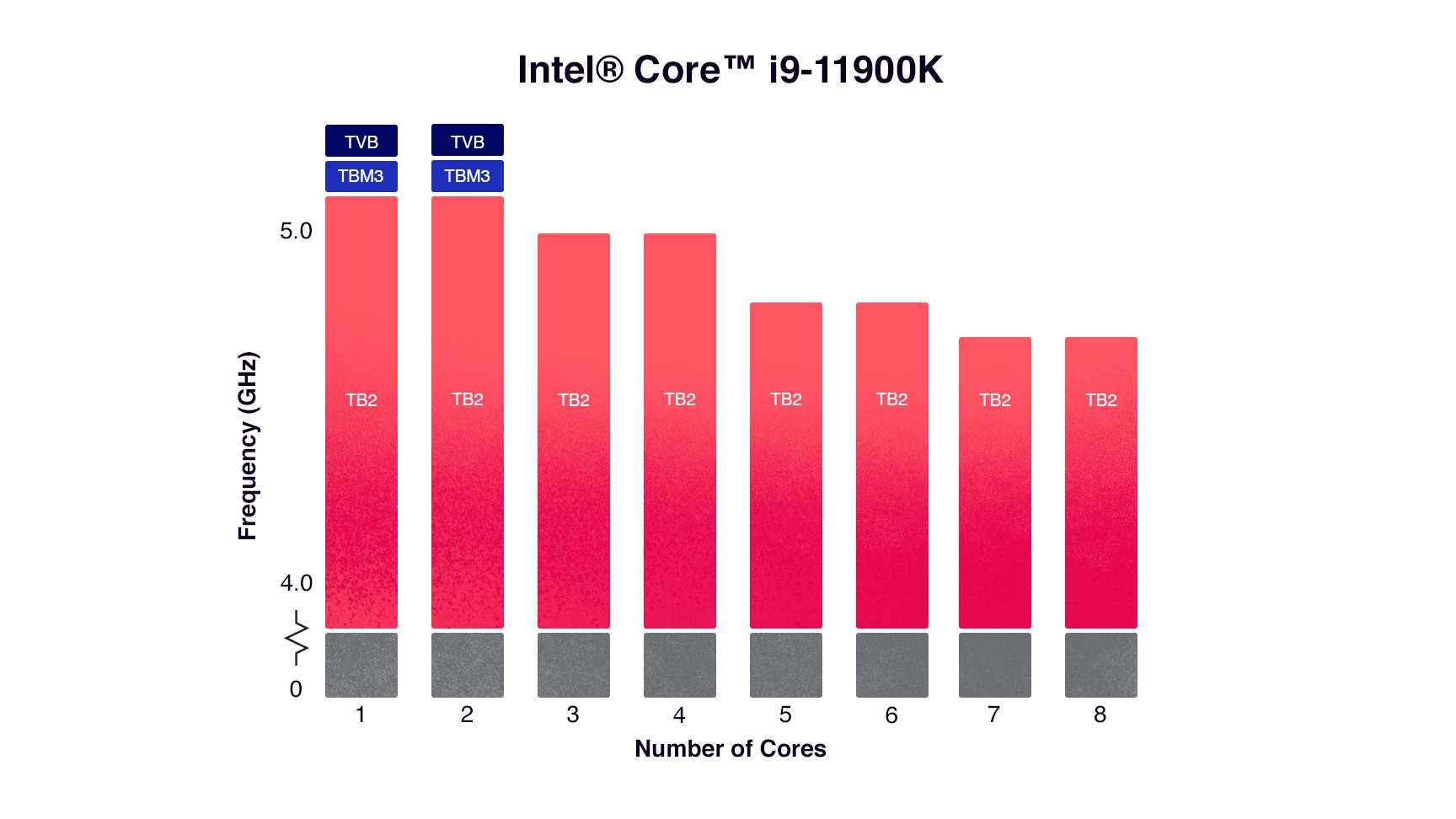Yes, that's why intel and amd have prefered cores that run faster than the others, if they would believe that they could make a core faster without HT/SMT and that it would make sense then they would add one or two much faster cores without HT, but gaining 1-2% without HT is not worth the effort for them having to design another different core because the loss in MT performance will reduce the desirability of these CPUs.
How much trouble did intel have because p-cores and e-cores are different, now they would add yet another different core to the mix, yeah that would go over really well with consumers...
Innovations like Adaptive Boost Technology make 11th Gen CPUs faster. Learn how Turbo Boost, Thermal Velocity Boost, and ABT work together.

www.intel.la
TVB is essentially a hack. Oh, it's officially supported in that it exists, but, it's essentially saying "what two cores can we push beyond our baseline target successfully on this particular die that is binning better than the rest?" This same die is used down the stack, yet TVB is only enabled on a small subset. Also, and this is a key point, TVB would STILL be available on a hypothetical ST optimized core.
It is my opinion that the 13900K could be a better all-around processor in well over 95% use cases with 6 P cores with 5% better IPC optimized for ST throughput and 24 E cores of the existing design. It would be better than the existing model in every ST benchmark. It would be better than the existing model in every MT benchmark that didn't specifically target 7-8 threads, and, depending on how that benchmark behaved, it still might best it. It would only require two core types. It would be immune to specifically targeted SMT attacks and would be no more vulnerable to shared L2 attacks than the existing product.
Why didn't they choose to do the above? Because they were ALREADY invested in the GoldenCove core, which is an evolution of the previous cove cores in Rocket lake, tiger lake and Ice Lake. If you've already got the product, there's no reason to walk away from it. What we're talking about is the next generation of core after the Coves are finished. Also, don't forget that marketing plays a role in all of this. Against a 16 core, 32 thread 7950x, the 6+24=30 thread conjectural 13900K would be down two threads, even if it outperforms the 7950x across the board, which it would in everything not AVX-512.







